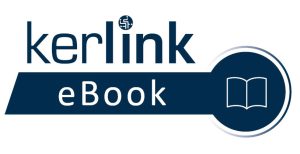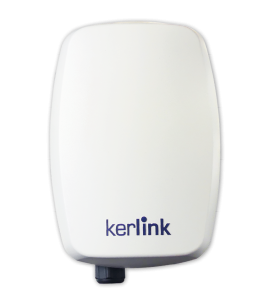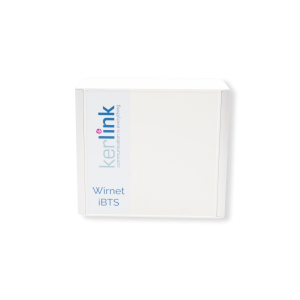Environment & Climate
Kerlink IoT Solutions in Action for Environment and Climate
Air Quality and Pollution
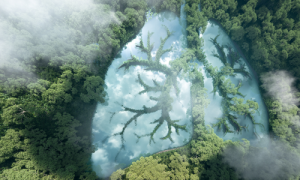
All around the world – from megacities to small villages – people are breathing dirty air. An estimated 9 out of 10 people worldwide are exposed to air pollutants that exceed World Health Organization (WHO) air quality guidelines. Dirty air is lowering life expectancy and damaging economies across the planet. According to the United Nations (UN), this polluted air kills some 7 million people each year[1], causes long-term health problems, such as asthma, and reduces children’s cognitive development. Ambient air pollution itself “accounts for an estimated 4.2 million deaths per year due to stroke, heart disease, lung cancer and chronic respiratory diseases,” according to the WHO[2], costing societies more than $5 trillion every year, according to the World Bank[3]. The biggest pollution sources are day-to-day processes, like vehicle fuel combustion, heat and power generation, industrial facilities and waste destruction. Air pollution has no frontiers and it can travel across borders, affecting populations well away from the root source and worsening the greenhouse effect. Thus, tackling air pollution requires a high degree of monitoring and visibility and cross-collaboration between stakeholders. Generating accurate air quality and pollution records is paramount in this process and the level of granularity might be critical to adapt local measures and regulations. Current air pollution monitoring systems are often very expensive and measure a limited range of parameters, making them costly for cities.
IoT sensors and devices, connected to an industrial-grade private IoT Network, can help detect and measure emissions of pollutants, particles and obnoxious gas in the air. If the two main air pollutants of concern in cities are nitrogen dioxide (NO2) and particle matter (PM2.5), because of their serious impact on health and environment, other key pollutants pose serious health and environmental hazards, like carbon monoxide (CO) and dioxide (CO2), ozone (O3), PM1, PM10, PM100, sulfur dioxide (SO2) and hydrogen sulfide (H2S) among others. IoT sensors can also monitor and records key variables like air temperature, wind, humidity and UV levels to collect additional data for combined intelligent processing and actionable data modelling. In specific industries, like livestock breeding, some important greenhouse gas, like methane (CH4) and nitrous oxide (N2O), are emitted. Methane, mainly produced by enteric fermentation and manure storage, is recognized to have an effect on global warming that is 28 times higher than carbon dioxide. Nitrous oxide on its side, arising from manure storage but also from the use of organic and inorganic fertilizers, has an effect on global warming potentially 265 times higher than carbon dioxide. IoT sensors can help monitor these emissions and adapt capture and reprocessing of these pollutant emissions.
Leveraging Kerlink IoT solutions to design a private IoT network can help to monitor air quality and pollution in urban areas, cities, industrial sites and farms to provide data-driven insights on pollutants, particles and obnoxious gas level in the air and increase better decision making. Kerlink industrial-grade IoT connectivity, powered by LoRaWAN technology, helps authorities, communities and private industries to react and take appropriate curative actions based on instant records and work on preventative measures based on modelized patterns, for better air quality.
Weather Monitoring
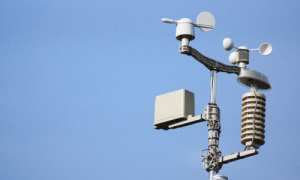
Weather monitoring can be crucial for outdoor industries and activities like agriculture, airport, transportation, construction, extraction or energy production (among others), making this forecasting a key element in their economic growth. Monitoring atmospheric conditions in real-time helps to ensure timely and appropriate decisions (smart agriculture), increase productivity (green energy) and ensure safe conditions for workers on a construction site or visitors on a natural site.
IoT sensors and devices can help to set-up proper weather reporting systems (WRS) or weather management systems (WMS) to automatically collect consistent data related to environmental conditions and to keep track of climate patterns over time. Ground data like rainfall, wind speed and direction, barometric pressure, temperature and humidity, solar radiation and cloud coverage can be key information to track. IoT sensors can remotely send these data to be analyzed and processed for better decision making and localized actions to take to anticipate changes in atmospheric conditions.
Leveraging Kerlink IoT solutions for weather monitoring system grants a cost-efficient and versatile industrial-grade connectivity, powered by LoRaWAN technology, to easily, quickly and efficiently deploy weather monitoring IoT sensors to collect on the field information that matters.
Climatic & Natural Hazards
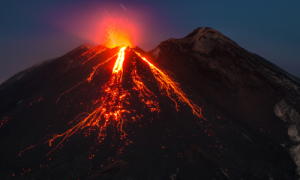
UN says that natural disasters are occurring more frequently with increased ferocity[1]. In the last 20 years, 7,348 major disasters were recorded worldwide, claiming 1.23 million lives, costing $2.97 trillion in economic losses with 80 percent most-affected countries located in Asia. But no region of the world is spared. Floods, droughts, landslides, wildfires, earthquakes, volcanic eruptions, tropical hurricanes, tsunamis, tornadoes, thunderstorms and lightning are all hazards and disasters directly induced by the weather and earth natural phenomena. If natural disasters are outside of human control and if IoT technologies can’t stop disasters from happening, they can however be very useful and efficient to analyze, warn and get prepared before they occur, to save lives. IoT innovations can help in disaster preparedness and additional resilience, especially by collecting data before, during and after the event to help scientists and experts to predict and anticipate. IoT connectivity solutions can potentially also offer an alternative communication infrastructure in locations where conventional infrastructure might be non-existent, weak or vulnerable, or not dedicated for such purpose.
IoT sensors and devices, connected to a robust, performant and dedicated IoT network, can help monitor natural conditions and phenomena and collect relevant data to fuel monitoring systems and predictive models. For example, battery-powered IoT sensors, able to transmit their data over a long distance, are put on trees and measure the surrounding temperature, the humidity level, moisture and CO/CO2 levels. A critical combination of these parameters could mean a high probability of forest fire, or even detect starting ones, and would instantly raise an alert. This helps detect high-risk areas, localize fire starts, track spread of the blaze, inform firefighters and warn population and residents. Many other use cases are currently deployed on the field: connected microwave and seismic sensors to measure earth movements before and during earthquakes, infrared sensors to identify water levels and anticipate floods or radon-sensing system to detect volcano activity and anticipate eruption, to describe only few.
Leveraging Kerlink industrial-grade IoT solutions can help to collect and transmit precious data for detection, analysis and prevention of climatic and natural hazards. This cost-efficient, robust, performance and easy-to-use IoT connectivity, powered by LoRaWAN technology, can help scientists, researchers, authorities and intervention teams to get the right information at the right time. Relevant data will deliver more accurate predictions and early warning signs, thus leading to better preparedness and improved disaster anticipation and management.
Wildlife Protection
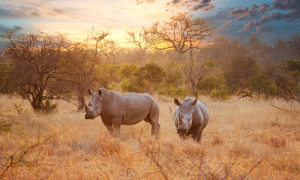
According to National Geographic “Keystone species play a vital role in their ecosystem”[1]. The removal of specific populations can have disastrous consequences for the surrounding ecosystems. This is especially true for endangered predators like lions or cheetahs and for species like elephant, black rhinos or pangolins. Africa’s elephant population declined by 144,000 elephants between 2007 and 2014[2]. Available current figures show a rate of decline of the elephant population around eight percent a year, mainly caused by ivory poachers. In the same way, if black rhino has returned from the verge of extinction in 1995, the western black rhino has been declared extinct in 2011. And the last male Northern White Rhino died in March 2018. In this trend continues, rhinos will be extinct in South Africa by 2025. However, according to the National Geographic Society, the vast majority of polled adults from over 12 industrialized nations believe that “more than half the planet’s land and sea” should be protected[3]. But, interestingly, this survey also showed that many citizens have a limited understanding of conservation topics and the way to prevent extinction. Hopefully, to bridge this gap, several wildlife experts are leveraging IoT solutions to monitor, track and protect endangered populations and keystone species in wide natural reserves and national parks.
IoT sensors and devices, connected to a tailored private IoT network, can help to reach this goal. For example, in the regions of Africa where poaching is increasingly threatening to wipe out endangered species, IoT trackers are used to protect wild animals by enabling remote tracking. This tracking helps park rangers make the most of their limited resources to intercept poachers before they slaughter the animals. Ruggedized and cost-efficient GPS-enabled tracking collars – worn by lions and cheetahs – or GPS-enabled autonomous tracking devices – inserted in rhinos’ horns – sent their near-real-time location using IoT low power wide area networks (IoT LPWANs). In addition to GPS, and to increase the tracking device battery lifetime, the solution can use GPS-free and energy-saving network-based geolocation, thanks to the native triangulation technique of LPWANs. Not only does this help researchers and scientists monitor animal populations and understand their behaviors, but it also provides critical information for rangers to react in case poachers are detected in the neighborhood. Combined with other IoT systems, like thermal cameras or acoustic sensors installed along the reserve’s perimeter or vehicle identification and tracking, these lightweight IoT trackers confirm their usefulness in the protection of species by deterring poachers’ actions.
Leveraging Kerlink IoT solutions helps to create a sustainable and safe environment for animals and humans. Designed for rugged outdoor conditions, Kerlink industrial-grade IoT connectivity, powered by LoRaWAN technology, brings the coverage, reliability, performance and energy-efficiency required for connecting trackers and other sensors on wide areas. The aggregation of relevant data and alerts are achieved through this simple, easy to install, simple to use and cost-efficient connectivity, to achieve 24/7 remote monitoring and geolocation, thus helping to relieve the threat of poachers and offering a major potential for wildlife conservation efforts.
[1] https://www.nationalgeographic.org
[2] https://www.washingtonpost.com
[3] https://www.nationalgeographic.com
Kerlink IoT Solutions for Smart Environment & Climate
Kerlink Success Stories for Smart Environment & Climate

Kerlink & UNHCR
Kerlink Gateways and LoRaWAN Network Delivering Water-Monitoring Systems at UN Refugee Camps
Abstract : “The United Nations High Commissioner for Refugees (UNHCR) is charged with providing water to millions of people worldwide. In addition to the daunting logistics of delivering fresh water to refugees, the agency is charged with monitoring water supplies and paying the entities that deliver the water to refugee sites in many countries. Water trucking can be a fast method of providing a refugee population with access to life-saving quantities of safe drinking water. However, water trucking operations can be inefficient, expensive, time-consuming to administer and hard to monitor.”
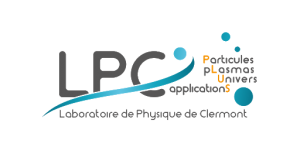
Kerlink & Le Laboratoire de physique de Clermont
Kerlink Gateway Technology Powering Internet of Things Radon-Monitoring System on Europe’s Most Active Volcano, Mount Etna
Abstract : ” Thorigné-Fouillard, France – Feb. 26, 2020, 6:00 pm CET – In a novel example of the broad applications of LoRaWAN Internet of Things (IoT) connectivity, Kerlink (AKLK – FR0013156007), a specialist in solutions dedicated to the IoT, today announced its Wirnet gateway is powering a radon-sensing project on Europe’s most active volcano, Mount Etna.
The recently deployed network linking Mount Etna on the east coast of Sicily to scientists in Clermont-Ferrand, France, 1,200 kilometers away, transmits radon measurement data, which helps scientists monitor activity of the volcano. Radon is a natural radioactive element found in high concentrations near volcanoes and uranium deposits and is one of the potential precursors of volcanic eruptions.”



